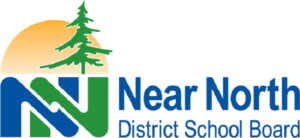Indigenous language studies at Near North District School Board
The following interviews were conducted and the feature was written in mid-May for publication in early June to acknowledge and celebrate National Indigenous Peoples Day on Monday, June 21. The discovery of the remains of 215 Indigenous children on the grounds of the former Kamloops Indian Residential School in British Columbia brings to the fore the importance of support for Indigenous students, and the study of Indigenous issues for all.
 NORTH BAY– Indigenous education is an important part of learning for both Indigenous and non-Indigenous students. Learning about Indigenous history, culture, and worldview is the foundation of truth and reconciliation.
NORTH BAY– Indigenous education is an important part of learning for both Indigenous and non-Indigenous students. Learning about Indigenous history, culture, and worldview is the foundation of truth and reconciliation.
While Indigenous education has numerous learning aspects, this feature will focus on Near North District School Board (NNDSB)’s language studies programming. While the Ministry of Education calls this programming NSL, at NNDSB the preferred name is Anishinaabemowin or Nishnaabemwin.
NNDSB offers Anishinaabemowin (Ojibwe language) classes to students in 13 schools. With 10 language teachers and 365 students enrolled, students have the opportunity to learn Anishinaabemowin to develop a better understanding of Indigenous culture and benefit from cross-cultural education.
“Learning about Indigenous language and culture is very important for all students and staff,” said Tracy Hendrick, NNDSB’s Indigenous Education Lead. “Infusing Indigenous worldview in the classroom and curriculum, in a good way that appreciates the culture, not appropriates it, should be happening regularly and not just on special days of recognition.”
All students, Indigenous and non-Indigenous, can take Anishinaabemowin classes in lieu of French. Anishinaabemowin ensures Indigenous students can learn about and embrace their cultural ways, and sharing what they already know enhances their sense of identity and pride. Non-Indigenous students gain a better understanding of and appreciation for Indigenous culture and worldviews.
Anishinaabemowin classes often take the lead in helping all students and staff develop an awareness and appreciation of Indigenous cultures and languages. This can include organizing school pow wows, school drum groups, and incorporating Ojibwe language throughout the school in several ways including word of the day and signage.
Wanda McQuabbie has been an Anishinaabemowin teacher at Britt Public School for almost 20 years.
“I’m fortunate to have my First Nations background that helps and supports our learners who are Indigenous and non-Indigenous,” explains McQuabbie. “At Britt, the learning has really flourished. Even though we’re a small school, our language is strong at the school and across the school. It’s really progressed over the years.”
Common Ojibwe words and phrases you may see or hear around the school or in a meeting are:
- boozhoo – more formal hello
- aaniin – more casual hello
- kina weyaa – everyone
- <name> ndizhnikaaz – my name is
- <place> ndoonjibaa – I’m from
- mno gizhep – good morning
- mno giizhgat – it’s a nice day
- mno bmaadziwin – a good life
- biindigen – welcome
- miigwech – thank you
- baamaapii – until later (used when parting, similar to a good-bye)
- ahow, nahow – ok (often used to acknowledge a thank you)
- weweni – take care, be careful
- binoojiinyag – children
- Anishinaabe – Ojibwe/Pottawatomi person
- Anishinaabeg or Anishinaabek – plural of Anishinaabe
- Anishinaabe kwe – Anishinaabe woman
- Anishinaabe kwewag or kwewak – plural Anishinaabe women
- Anishinaabemowin or Nishnaabemwin- Ojibwe language
Depending on the individual or community, there may be spelling differences.
“I’m proud to be part of Near North and proud to say the language is strong here. I’m part of a great team that tries to fulfill that portion of that Native language program,” said McQuabbie. “At Britt, we have a drum, teepee put up – it’s visible in our school. We are sharing our knowledge with the other NSL teachers. We’ve come a long way as an NSL group.”
NSL was first introduced in Ontario’s education curriculum in 1987.
The first school within NNDSB to offer NSL was Britt Public School. Since then, several other schools began offering these classes and programming.
“When my students graduate, I give them an Eagle Feather. And there are teachings that go along with that Eagle Feather, which is a major accomplishment when they receive it – it’s a high honour. I tell my students what it represents and they carry that for life,” said McQuabbie.
When asked, McQuabbie says her favourite part of teaching students the language is having them learn and understand it.
“My favourite part of the job is hearing the kids speak the language and having them repeat it back to me as well as carry on a conversation. It’s a real joy for me.”
For McQuabbie, the first language she learned was Ojibwe and she learned English as a second language.
“If you have all the appropriate resources and tools in place, it makes it easier and fun for the kids to learn the language,” she stated. “I put pride in everything that I make for my kids. And for them to use it and utilize it and learn it and to have for them to use and speak the language. That’s the golden moment for me.”
-30-
Information about Near North District School Board:
Near North District School Board is an English-language public school board serving the North Bay – Parry Sound – Nipissing area. The Board consists of approximately 10,000 students in 27 elementary schools, seven secondary/senior schools and various alternative learning centres. For more information, please visit nearnorthschools.ca and follow Near North District School Board on social media.
For more information, please contact:
Josh Casey (he/him)
Communications Coordinator
Near North District School Board
(705) 472-8170, extension 5083
Josh.Casey@nearnorthschools.ca


